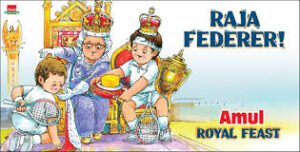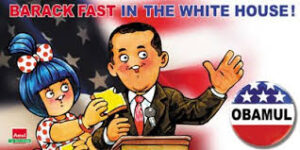Brand of Humour
There has been a lot of talk in recent times about humour and the boundaries within which it needs to operate, assuming that we accept that boundaries need to exist. Wit, mockery, satire, slapstick, light hearted, playful, banter, provocative, insulting, shocking there is a host of sub genres that can be found if you start peeling the layers.
Brands have, for as long as advertising and communication have existed, relied on humour to get their message across. Of course, with varying degree of success. We have in a previous post discussed that communication with an emotional appeal tends to fare better. Humour in that sense is a more broad based emotion than love (of any kind). Hence, has been used for a broader set of products & brands.
So is success guaranteed if the communication has humour? Does success of communication necessarily translate into sales or business success?
With all due credit to the various studies that have been carried out don’t seem to provide any conclusive evidence. Therefore, No and Can’t Say, would be the most honest responses to the questions above. How then do we assess or plan for it? In some form or the other the answer would lie on a graph with relevance and recall as the axes.
While the above would give an indication of the effectiveness the aspect that relative control may be exercised is relevance. The down side. It is subjective. The extent of humour, the subject, the delivery all are but a judgement call made by a select few that run the brand. There are several different ways in which humour can be used:• Positioning the brand as one with a light hearted view of the world. Humour and playfulness therefore becomes a key element of the brand’s personality.
• Presentation: This may be a campaign specific choice where in a brand opts for humour as a means of delivering a message. Relevance would again be something to watch out for. Some brands are able to hit the nail on the consistently, some struggle, whilst others just do not get it!
• Association: Depending upon who the brand’s audience is, a brand may choose to associate with properties that are humour based. Again, as with any other association relevance and fit with the overall brand is important.
http://www.youtube.com/watch?v=A9nCPQ2_FlQ
Given the myriad media choices available and the fact that in this day and age consumers are a part of the brand definition humour is a tight rope to walk too. Brands that choose this path have to walk to a consistent rhythm and in a social 24×7 context live upto the personality especially brands interacting on a constant basis in the sociosphere.
The good part is the sociosphere offers feedback as a brand you can gauge whether you are flat or tickling rib or stirring intellect.
While new highs are being achieved with regard to what can be said or done in the name of humour there are new lows that are being set too, Charlie Hebdo and the AIB Knockout closer home are cases in point where humour did not go down well with some. It doesn’t need to either. Needless to say any freedom needs to be exercised responsibly.Living on the edge
We would all agree that it’s a tough job getting our message across to our target consumers. Add to that a puritan (engineers) definition of communication which is considered complete only when it is interpreted by recipient in the same manner as intended by the transmitter (Prof B at my engineering college must be heaving a sign of relief) and we are talking a steep slope that needs to be climbed.
As mentioned in one of my previous posts, the purpose of this blog is not to propound new theories, it is to present a perspective. So pardon references to Marketing 101.
Moving on, consumers today exposed perhaps over-exposed to messages of all sort. Thus to laden the expectation of decoding/deciphering our communication is expecting a bit too much. Moreover, pumping in marketing dollars hoping that he would is bizarre!
Most communication, even advertising operates on simple parameters we learnt in high school physics. Amplitude, wave-length and frequency. In advertising terms how loud, how long and how often. Well yes we pay the agencies and other experts to do that bit.
The most important bit and hopefully as marketers we hold it close like dear life is the what.
Establishing any communication is, has been and perhaps always will remain an uphill journey. One must realize though that the other side of the cliff is a steep fall. The best time spent therefore, would be at the top living on the edge.
What we communicate goes through the organic phases milestones on the climb that I have chosen to call Ignorance, Recall, Attention and finally the top Recommendation.
The other side however, is the steep fall which starts with the flip side of recommendation i.e. Frustration and very soon thereafter Annoyance.
It is important to note here that what are being discussed are the stages of the communication not the brand per se.
Bringing back the concepts of how loud, how long and how often a marketer would need to be careful with the communication once it has been established. Push it to loud, long or often chances are you will find yourself free-falling straight to annoyance.
To make my point how a communication is living dangerously on the edge and to bring alive the discussion I am leaving you with recent communication from a popular brand.
- The start
http://www.cadburyindia.com/in/en/brands/pages/videoplayer.aspx?vid=1609
- The build
http://www.youtube.com/watch?v=65ilZ8esAUs
- The extension
http://www.youtube.com/watch?v=Ag68swbxQvc
- The (un-necessary) stretch
http://www.youtube.com/watch?v=_WR844HP-yU




